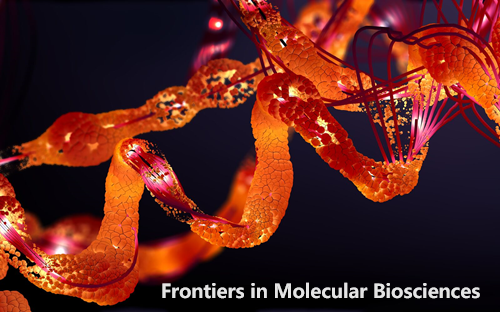Development and validation of a nomogram for predicting advanced liver fibrosis in patients with chronic hepatitis B
IF 3.9
3区 生物学
Q2 BIOCHEMISTRY & MOLECULAR BIOLOGY
引用次数: 0
Abstract
BackgroundThe progression of chronic hepatitis B (CHB) to liver fibrosis and even cirrhosis is often unknown to patients, but noninvasive markers capable of effectively identifying advanced liver fibrosis remains absent.ObjectiveBased on the results of liver biopsy, we aimed to construct a new nomogram to validate the stage of liver fibrosis in CHB patients by the basic information of CHB patients and routine laboratory tests.MethodsPatients with CHB diagnosed for the first time in the First Affiliated Hospital of Anhui Medical University from 2010 to 2018 were selected, and their basic information, laboratory tests and liver biopsy information were collected. Eventually, 974 patients were enrolled in the study, while all patients were randomized into a training cohort (n = 732) and an internal validation cohort (n = 242) according to a 3:1 ratio. In the training cohort, least absolute shrinkage and selection operator (Lasso) regression were used for predictor variable screening, and binary logistic regression analysis was used to build the diagnostic model, which was ultimately presented as a nomogram. The predictive accuracy of the nomograms was analyzed by running operating characteristic curve (ROC) to calculate area under curve (AUC), and the calibration was evaluated. Decision curve analysis (DCA) was used to determine patient benefit. In addition, we validated the built models with internal as well as external cohort (n = 771), respectively.ResultsUltimately, the training cohort, the internal validation cohort, and the external validation cohort contained sample sizes of 188, 53, and 149, respectively, for advanced liver fibrosis. Gender, albumin (Alb), globulin (Glb), platelets (PLT), alkaline phosphatase (AKP), glutamyl transpeptidase (GGT), and prothrombin time (PT) were screened as independent predictors. Compared with the aminotransferase-to-platelet ratio index (APRI), fibrosis-4 index (FIB-4), and King’s score, the model in the training cohort (AUC = 0.834, 95% CI 0.800–0.868,开发和验证用于预测慢性乙型肝炎患者晚期肝纤维化的提名图
背景慢性乙型肝炎(CHB)进展为肝纤维化甚至肝硬化的过程往往不为患者所知,但能够有效识别晚期肝纤维化的无创标志物仍然缺乏。目的基于肝活检结果,我们旨在通过CHB患者的基本信息和常规实验室检查构建一个新的提名图,以验证CHB患者肝纤维化的阶段。方法选取2010年至2018年在安徽医科大学第一附属医院首次确诊的CHB患者,收集其基本信息、实验室检查和肝活检信息。最终,974名患者被纳入研究,所有患者按照3:1的比例随机分为训练队列(n = 732)和内部验证队列(n = 242)。在训练队列中,使用最小绝对收缩和选择算子(Lasso)回归进行预测变量筛选,并使用二元逻辑回归分析建立诊断模型,最终以提名图的形式呈现。通过运行特征曲线(ROC)计算曲线下面积(AUC)来分析提名图的预测准确性,并对校准进行评估。决策曲线分析(DCA)用于确定患者的获益情况。此外,我们还分别用内部和外部队列(n = 771)验证了建立的模型。结果最终,训练队列、内部验证队列和外部验证队列中的晚期肝纤维化样本量分别为 188、53 和 149。性别、白蛋白(Alb)、球蛋白(Glb)、血小板(PLT)、碱性磷酸酶(AKP)、谷氨酰转肽酶(GGT)和凝血酶原时间(PT)被筛选为独立的预测因素。与转氨酶与血小板比值指数(APRI)、纤维化-4指数(FIB-4)和King评分相比,训练队列(AUC = 0.834,95% CI 0.800-0.868,p <0.05)和内部验证队列(AUC = 0.804,95% CI 0.742-0.866,p <0.05)中的模型显示出最好的区分度和最佳的预测性能。此外,DCA显示,在所有队列中,提名图的临床效益均优于APRI、FIB-4和King's评分。
本文章由计算机程序翻译,如有差异,请以英文原文为准。
求助全文
约1分钟内获得全文
求助全文
来源期刊

Frontiers in Molecular Biosciences
Biochemistry, Genetics and Molecular Biology-Biochemistry
CiteScore
7.20
自引率
4.00%
发文量
1361
审稿时长
14 weeks
期刊介绍:
Much of contemporary investigation in the life sciences is devoted to the molecular-scale understanding of the relationships between genes and the environment — in particular, dynamic alterations in the levels, modifications, and interactions of cellular effectors, including proteins. Frontiers in Molecular Biosciences offers an international publication platform for basic as well as applied research; we encourage contributions spanning both established and emerging areas of biology. To this end, the journal draws from empirical disciplines such as structural biology, enzymology, biochemistry, and biophysics, capitalizing as well on the technological advancements that have enabled metabolomics and proteomics measurements in massively parallel throughput, and the development of robust and innovative computational biology strategies. We also recognize influences from medicine and technology, welcoming studies in molecular genetics, molecular diagnostics and therapeutics, and nanotechnology.
Our ultimate objective is the comprehensive illustration of the molecular mechanisms regulating proteins, nucleic acids, carbohydrates, lipids, and small metabolites in organisms across all branches of life.
In addition to interesting new findings, techniques, and applications, Frontiers in Molecular Biosciences will consider new testable hypotheses to inspire different perspectives and stimulate scientific dialogue. The integration of in silico, in vitro, and in vivo approaches will benefit endeavors across all domains of the life sciences.
 求助内容:
求助内容: 应助结果提醒方式:
应助结果提醒方式:


